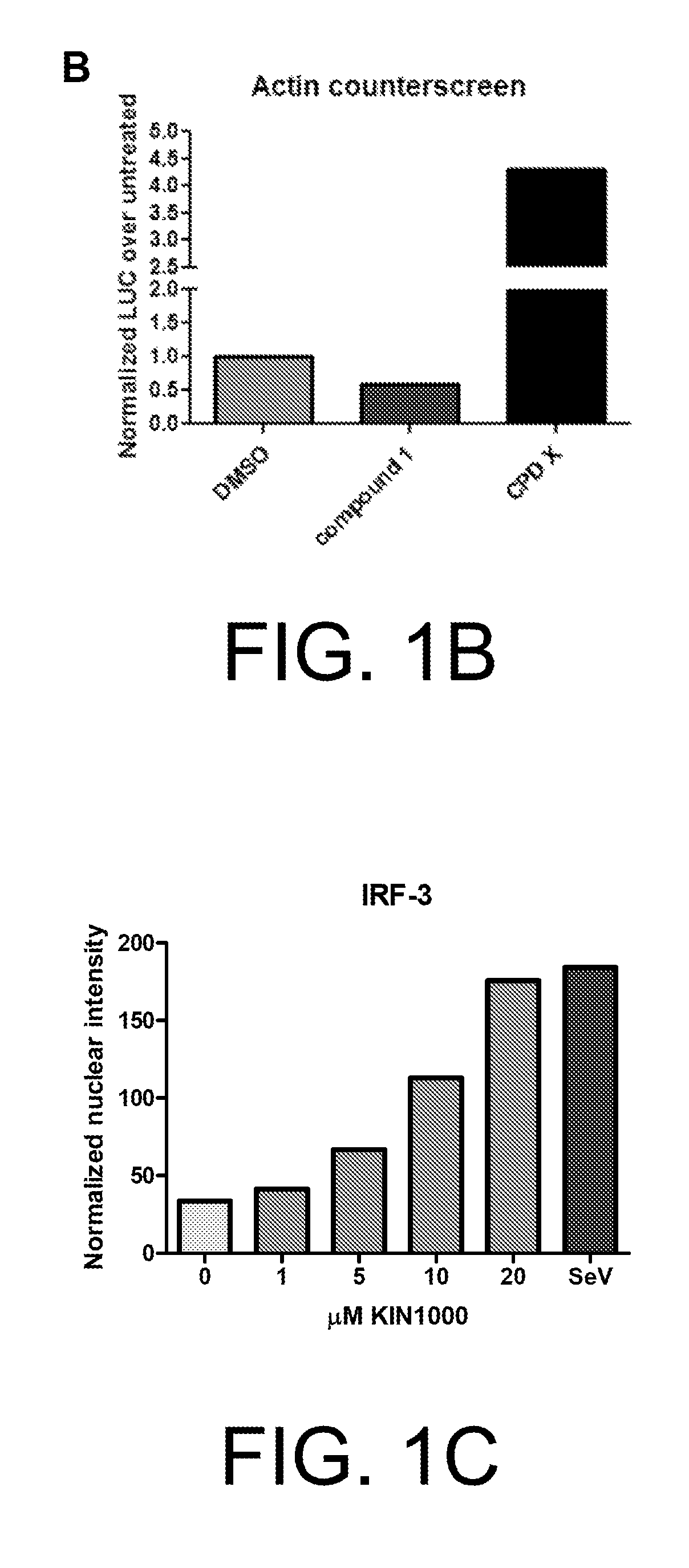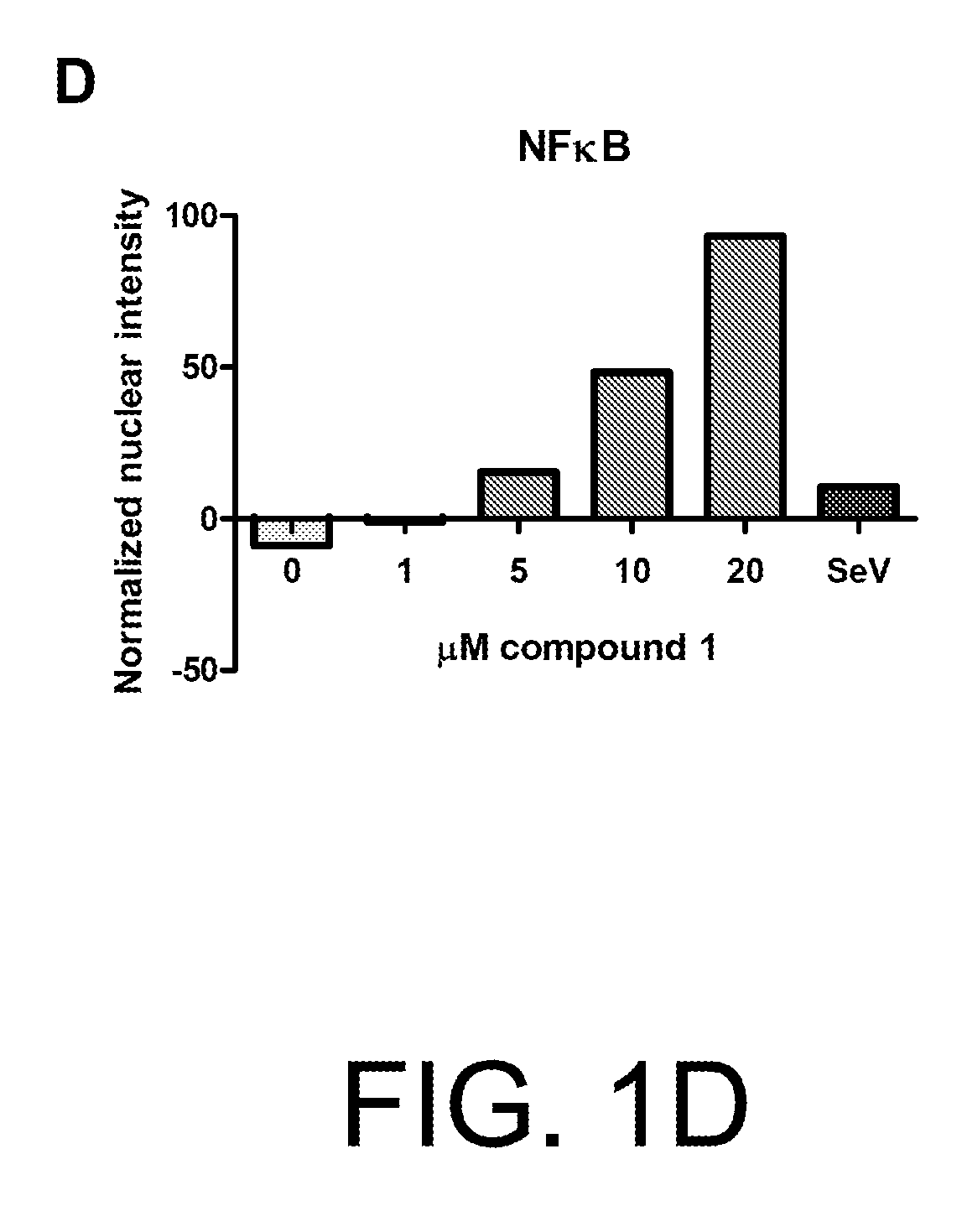Anti-viral compounds, pharmaceutical compositions, and methods of use thereof
a technology of antiviral compounds and pharmaceutical compositions, applied in the field of pharmaceutical compositions, can solve the problems of rna viruses, affecting the health of millions of people, and causing significant morbidity and mortality,
- Summary
- Abstract
- Description
- Claims
- Application Information
AI Technical Summary
Benefits of technology
Problems solved by technology
Method used
Image
Examples
experimental examples
Example 1
General Synthesis Methods
[0233]The compounds of the disclosure may be prepared by the methods described below, together with synthetic methods familiar to those of ordinary skill in the art. The starting materials used herein are commercially available or may be prepared by routine methods known in the art (such as those methods disclosed in standard reference books such as the COMPENDIUM OF ORGANIC SYNTHETIC METHODS, Vol. I-VI (published by Wiley-Interscience)). Preferred methods include those described below.
[0234]During any of the following synthetic sequences it may be necessary and / or desirable to protect sensitive or reactive groups on any of the molecules concerned. This can be achieved by means of conventional protecting groups, such as those described in T. W. Greene, Protective Groups in Organic Chemistry, John Wiley & Sons, 1981; T. W. Greene and P. G. M. Wuts, Protective Groups in Organic Chemistry, John Wiley & Sons, 1991, and T. W. Greene and P. G. M. Wuts, Pr...
example 2
Synthesis of N-(7-methyl[1,3]thiazolo[5,4-g][1,3]benzoxazol-2-yl)thiophene-2-carboxamide
[0240]Acid chloride coupling was performed:
[0241]
To a suspension of 0.15 g 7-methyl[1,3]thiazolo[5,4-g][1,3]benzoxazol-2-amine in 2.5 mL dry pyridine was added 0.078 mL thiophene-2-carbonyl chloride. The reaction was stirred for 5 h at 80° C. then cooled to room temperature. 4 mL of water was added and the precipitate was filtered off, washed with water and dried to afford 0.154 g of N-(7-methyl[1,3]thiazolo[5,4-g][1, 3]benzoxazol-2-yl)thiophene-2-carboxamide.
example 3
Synthesis of N-[6-(pyrrolidine-1-sulfonyl)-1,3-benzothiazol-2-yl]naphthalene-2-carboxamide
[0242]The intermediate 6-(pyrrolidin-1-ylsulfonyl)-1,3-benzothiazol-2-amine, which was used in the synthesis of N-[6-(pyrrolidine-1-sulfonyl)-1,3-benzothiazol-2-yl]naphthalene-2-carboxamide, was synthesized as described below:
[0243]
A mixture of commercially available 4-(pyrrolidin-1-ylsulfonyl)aniline (1.0 g) and ammonium thiocyanate (1.01 g) was suspended in 25 mL acetic acid and heated to 90° C. The mixture was cooled to 15° C. and liquid bromine (0.22 mL) was added dropwise. The reaction was stirred at room temperature overnight then filtered. The filtrate was concentrated under vacuum and the residue was added to a solution of aqueous sodium bicarbonate and stirred for 1 hour. The precipitate was filtered off, washed with water and ether and dried to afford 0.7 g of 6-(pyrrolidin-1-ylsulfonyl)-1,3-benzothiazol-2-amine.
[0244]0.1 g of 6-(pyrrolidin-1-ylsulfonyl)-1,3-benzothiazol-2-amine was d...
PUM
| Property | Measurement | Unit |
|---|---|---|
| time | aaaaa | aaaaa |
| temperature | aaaaa | aaaaa |
| Ra | aaaaa | aaaaa |
Abstract
Description
Claims
Application Information
 Login to View More
Login to View More - R&D
- Intellectual Property
- Life Sciences
- Materials
- Tech Scout
- Unparalleled Data Quality
- Higher Quality Content
- 60% Fewer Hallucinations
Browse by: Latest US Patents, China's latest patents, Technical Efficacy Thesaurus, Application Domain, Technology Topic, Popular Technical Reports.
© 2025 PatSnap. All rights reserved.Legal|Privacy policy|Modern Slavery Act Transparency Statement|Sitemap|About US| Contact US: help@patsnap.com



